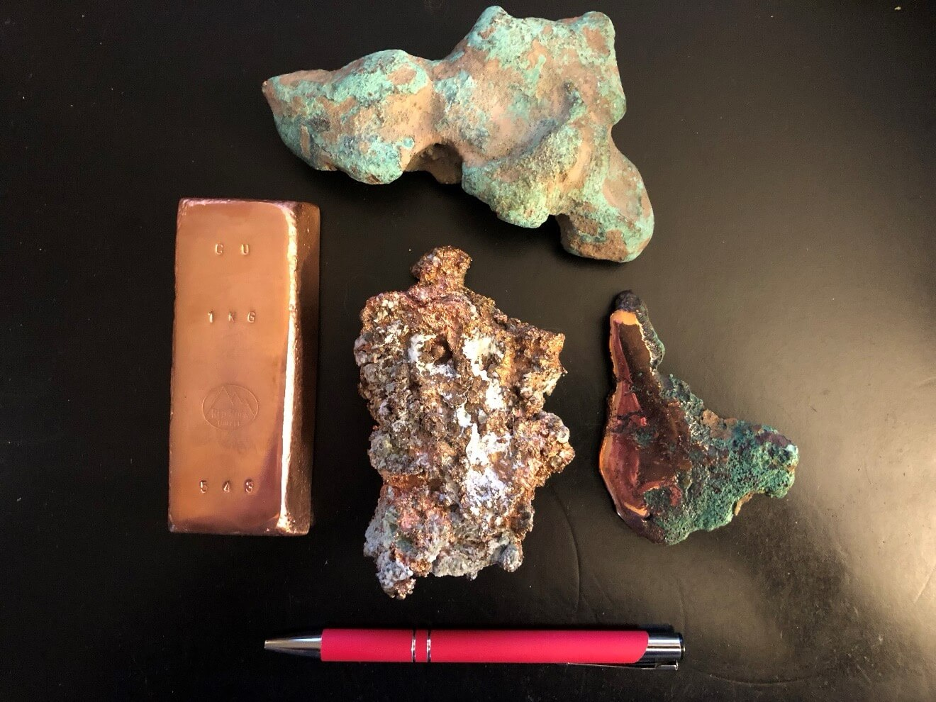Trump’s Crypto Pivot
![]() When Trump Doubled Down on Crypto
When Trump Doubled Down on Crypto
 July 2024: Trump’s Crypto Pivot in Nashville
July 2024: Trump’s Crypto Pivot in Nashville
Last July, Donald Trump took the stage at the Bitcoin 2024 conference in Nashville and declared: “I will be the pro-Bitcoin president.”
This was a dramatic shift from his post-presidency skepticism — remember, in 2021 he called Bitcoin “a scam” and complained it was “another currency competing against the dollar.”
Now, Trump was all-in, warning: “If we don’t embrace crypto and Bitcoin technology, China will… and we cannot let China dominate.”
Trump promised to:
- Make the U.S. the “crypto capital of the world”
- Stockpile Bitcoin seized by the government
- Fire SEC Chair Gary Gensler on Day 1
- Block any move toward a central bank digital currency (CBDC)
- Ensure crypto is “mined, minted and made in the USA.”
The crowd went wild, but details were thin. Trump’s embrace of crypto was less about libertarian ideals and more about government muscle — an odd twist for an asset built on decentralization.
 October 2024: Sherrod Brown vs. the Crypto Lobby
October 2024: Sherrod Brown vs. the Crypto Lobby
By October, the crypto industry had zeroed in on a new target: Ohio Sen. Sherrod Brown, one of crypto’s fiercest critics and a major obstacle to industry-friendly legislation.
The race between Brown and Republican challenger Bernie Moreno became the most expensive Senate contest in Ohio’s history, thanks to a flood of crypto cash.
- Crypto PACs, led by Fairshake and Defend American Jobs, spent over $40 million backing Moreno and attacking Brown.
- Moreno, a longtime blockchain enthusiast, was painted as the pro-innovation, pro-crypto candidate. Brown, meanwhile, was hammered as anti-crypto and out-of-touch.
The crypto lobby’s strategy: Use big money to oust opponents and elect allies. As one Fairshake spokesman put it: “Sherrod Brown was a top opponent of cryptocurrency and thanks to our efforts, he will be leaving the Senate.”
Meanwhile, Tyler Winklevoss, co-founder of Gemini, crowed: “The crypto army is striking!”
Election Day 2024 was a dream come true for crypto. The crypto lobby’s $40 million gamble paid off, sending a message to D.C.: “Support us, or we’ll support your opponent.”
Crypto PACs claimed credit for Moreno’s win, calling it a “bold” move that resonated with lawmakers everywhere.
In total, according to The New York Times, crypto groups across the country spent more than $130 million to elect pro-crypto candidates, helping put at least 18 new crypto-friendly senators and 263 House members in office.
In the aftermath of Nov. 5, Bitcoin and crypto stocks surged with Trump’s victory, and Bitcoin hit new highs.
 December 2024: Paul Atkins Tapped for SEC
December 2024: Paul Atkins Tapped for SEC
With victory in hand, Trump nominated Paul Atkins — a longtime crypto advocate and former SEC commissioner — to replace Gary Gensler as SEC chair.
Atkins is a known quantity in D.C. and a favorite with the crypto crowd, having co-chaired the Token Alliance, a major blockchain lobbying group. He’s promised to focus on “free markets, capital formation, investor choice and innovation” — music to the industry’s ears.
Atkins’ arrival marks a sharp pivot from Gary Gensler’s regulatory clampdown. Atkins openly slammed Gensler’s approach as “a direct threat to innovation.” Instead, he calls for clear, straightforward rules to help the crypto market reach its potential. He’s even got skin in the game: over $6 million in crypto-related investments
[URGENT: The SEC is poised to unleash a $30 trillion market shakeup TODAY — an event that could instantly affect your 401(k) and IRA.
If you do just one thing today, make sure it’s this: Click here now to watch a critical briefing and discover the steps to amplify your retirement savings from this unprecedented, fast-moving development.]
Did the crypto lobby get Trump over the finish line? Indeed, crypto played a significant role in Trump’s win. According to Trump campaign strategist Chris LaCivita, crypto issues were key to engaging diverse voters — including young people and Black and Asian voters — all of whom have higher rates of crypto ownership and have been historically tough to reach.
Crypto became a bridge to new constituencies, and massive spending by crypto PACs didn’t just help Trump; it reshaped the political landscape, ousting high-profile skeptics like Sherrod Brown and ushering in a wave of pro-crypto lawmakers.
As Kristin Smith of the Blockchain Association put it: “This is a huge victory for crypto… we’ve got the right folks in place to get the policy settled once and for all.”
In short, crypto didn’t just help propel Trump to victory — it triggered a political earthquake, blasting old alliances and redrawing the very blueprint of power in Washington.
![]() Documenting the Danger of FOMO
Documenting the Danger of FOMO
 The S&P 500’s 22% surge in under three months is “the kind of move that turns cautious investors into aggressive buyers,” says Paradigm editor Davis Wilson at The Million Mission.
The S&P 500’s 22% surge in under three months is “the kind of move that turns cautious investors into aggressive buyers,” says Paradigm editor Davis Wilson at The Million Mission.
While individual stocks like Nvidia (+62%), Meta (+42%) and Palantir (+68%) have posted “incredible short-term gains,” Wilson warns against letting FOMO (fear of missing out) drive investment decisions.
He notes: “FOMO isn’t just a casual phrase investors throw around. It’s one of the most well-documented behavioral traps in finance.”
Citing studies by Barber and Odean (2000) and Kaniel, Saar and Titman (2008), Wilson explains that “investors who chase recent winners tend to underperform… not because they’re wrong about the business, but because they’re late.
“Go back over the last decade and you’ll see it clearly:
- “August 2015: China devaluation scare — followed by a quick 15% rebound
- December 2018: Powell panic and a sharp sell-off — followed by a monster 2019 rally
- March 2020: COVID crash — followed by one of the strongest bull runs in history
- October 2022: Fed tightening peak — right before a huge multimonth rally
- April 2025: Tariff-driven dip — now up 22% in under three months.
“Every one of those was a time of fear,” Davis says. “Headlines were screaming ‘sell.’ Yet every one of them turned out to be an incredible time to buy.”
He cautions that the real opportunity rarely feels obvious in the moment: “Back in April, sentiment was weak. The market was in a slump. Trump was making noise about tariffs. Uncertainty was high. And great companies were quietly trading at a discount.
“That was the opportunity,” says Davis. “But of course, it didn’t feel like one at the time. It never does.”
Evidence from past market slumps highlights the importance of patience and resisting FOMO. “Patience pays,” he concludes, “it always does.”
 The S&P 500 and Nasdaq are rebounding — up 0.30% and 0.80% respectively — as tech shares rally after a recent pullback; notably, tech names like Nvidia and AMD are up about 2% today. In contrast, the Dow Jones Industrial Average is barely treading water.
The S&P 500 and Nasdaq are rebounding — up 0.30% and 0.80% respectively — as tech shares rally after a recent pullback; notably, tech names like Nvidia and AMD are up about 2% today. In contrast, the Dow Jones Industrial Average is barely treading water.
Commodities are in lockstep: Oil’s up 0.75%, just under $66 for a barrel of WTI. Silver, similarly, is up 0.70% to $36.66, but gold’s barely in the green at $3,351.90 per ounce. At last check, the crypto market is in fine fiddle, with Bitcoin up 3% to $108,740; simultaneously, Ethereum’s up 3.60% to $2,500.
The ADP employment report surprised with a loss of 33,000 private-sector jobs in June, sharply missing consensus expectations of a 103,000 gain. While ADP’s track record as a predictor for the official Labor Department numbers (due tomorrow) is weak, the negative result signals a note of caution.
![]() The Doctor (Copper) Is In
The Doctor (Copper) Is In
 “Foreign central bankers foresee inflation, inflation and more inflation,” says Paradigm’s acclaimed geologist Byron King. “Don’t take my word for inflation; ask the estimable ‘Dr. Copper,’ with its Ph.D. in economic forecasting and a long history of being right,” he says.
“Foreign central bankers foresee inflation, inflation and more inflation,” says Paradigm’s acclaimed geologist Byron King. “Don’t take my word for inflation; ask the estimable ‘Dr. Copper,’ with its Ph.D. in economic forecasting and a long history of being right,” he says.
“That is, the price of copper is up over 15% year-over-year, reflecting growing demand and tighter supply.”

Ingot and elemental metal from Keweenaw Peninsula, Michigan. (BWK collection)
Copper demand is surging due to ongoing economic growth in developing countries and the global expansion of electric vehicles (EVs), which require significant copper for manufacturing.
Byron notes that while Americans may not notice, “There’s a global EV glut out of China that’s happening everywhere else on the planet except here.”
In developed nations, demand is also being driven by efforts to modernize outdated power grids and the rapid construction of AI data centers, which “use large amounts of copper for wiring, as well as radiators to cool things down,” Byron explains.
At the same time, copper supply is tightening. Byron highlights a remarkable recent deal: “Just last week a consortium of Chinese copper smelters agreed to process copper concentrate from Chilean miner Antofagasta (ANFGF) for free, as in $0.00.”

Copper concentrate fills a railcar in Peru
This unprecedented agreement — where Chinese refiners “are giving away their refining services… for zero, zippo, nada” — underscores how acute the shortage has become.
Byron points out that this “sets a new low” for refining charges and signals “the absolute, real and growing scarcity of copper concentrate.” While other analysts call this outcome “better than expected” — revealing just how imbalanced the copper market is today.
![]() Sabotage: Oil Tankers Targeted
Sabotage: Oil Tankers Targeted
 A string of mysterious explosions has rocked oil tankers in the Mediterranean and Baltic Seas, with five vessels hit by suspected limpet mines in 2025.
A string of mysterious explosions has rocked oil tankers in the Mediterranean and Baltic Seas, with five vessels hit by suspected limpet mines in 2025.
The attacks have targeted ships soon after they visited Russian ports, fueling speculation that this is not random but a coordinated sabotage campaign.

Courtesy: Lloyd’s List Intelligence, Seasearcher, FT
Some security experts are pointing the finger at Ukraine, given its history of covert operations against Russian interests, though Kyiv has neither confirmed nor denied involvement.
Ukrainian military intelligence, however, labeled one of the attacked ships, the Vilamoura, as part of Russia’s “shadow fleet,” hinting at deeper intrigue.
But not all the attacks fit the same pattern. For example, the Vilamoura was hit on its hull, not its side, leading some to suspect other actors might be involved — possibly Libyan groups or other state-backed saboteurs.
Four of the targeted tankers also called at Libyan ports, a country rife with rival factions and oil smuggling, and all five had stopped off Malta for supplies.
The vessels involved are owned by prominent Greek and Cypriot shipping interests, and there’s no evidence they breached Western oil price caps.
The attacks have heightened maritime security fears, with the U.N.’s International Maritime Organization pledging to monitor the situation closely.
Still, the timing and location of the attacks, plus the use of Soviet-era mines, suggest a deliberate campaign tied to fallout from sanctions on Russian oil. The shipping world is on edge, wondering who’s really behind these shadowy blasts — and who might be next.
![]() Urban Safari, Rodent Edition
Urban Safari, Rodent Edition
 Suzanne Reisman, NYC’s self-appointed “rat whisperer,” is leading the creepily curious on a $40 Garbage & Rats walking tour through Manhattan’s aromatic alleys.
Suzanne Reisman, NYC’s self-appointed “rat whisperer,” is leading the creepily curious on a $40 Garbage & Rats walking tour through Manhattan’s aromatic alleys.
Donning fuzzy rat ears, Reisman reveals the secret lives of Norway rats (spoiler: they’re from Asia, not Oslo), who arrived centuries ago and decided Manhattan’s trash was a five-star buffet.

NYC’s “rat whisperer”
Courtesy: X
Tour-goers learn that rats are basically the Casanovas of the animal kingdom — with up to 20 romantic encounters per day. Meanwhile, sightings of lap dog-sized rats elicit the kind of excitement usually reserved for rare birds, while stops at historic rat-fighting venues add a dash of the grisly.
Reisman, a graduate of the Rat Academy — a free program run by New York City’s sanitation and health departments — delivers history and trash etiquette with the flair of a stand-up comic. And her tours sell out to everyone from rat-curious tourists to locals nostalgic for old-school grime.
The real lesson: Entrepreneurship creates opportunity, even turning rat watching into a moneymaking venture.
Well, that’s a rat — er,wrap — today. We’ll be back with a fresh episode tomorrow. Take care!
Best regards,

Emily Clancy
Associate editor, Paradigm Pressroom's 5 Bullets










